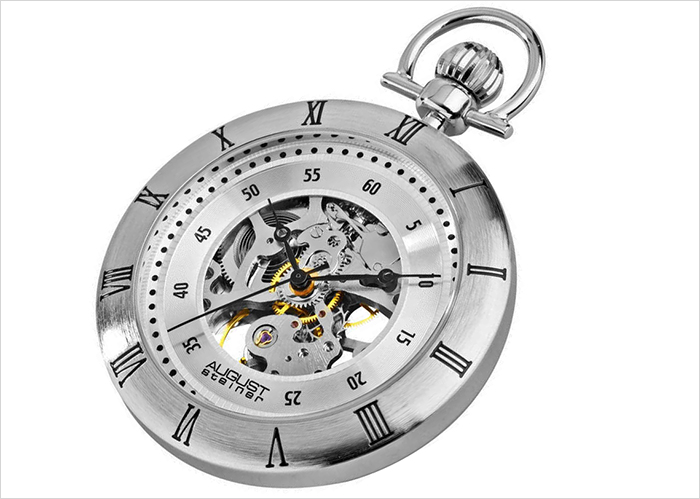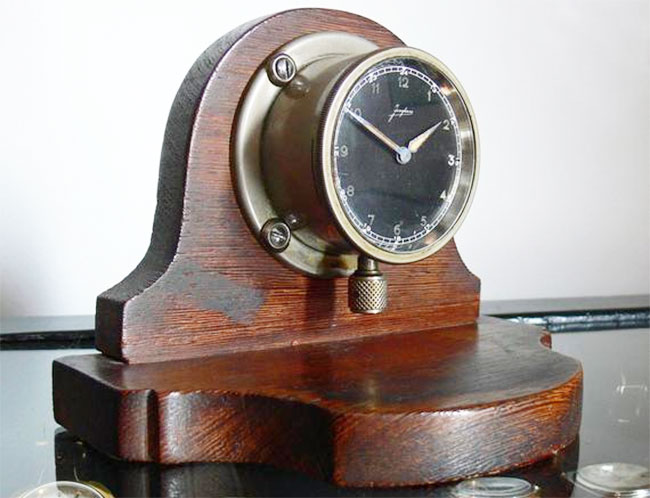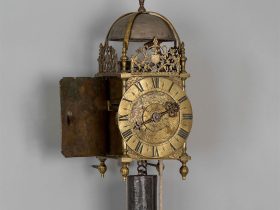Mantel or mantle clocks come in all shapes and sizes. They are tall as pillars or short like tree stumps. Some are stout, others slender. Some glitter in gold, while others are made of plain hardwood.
Some have silver angels standing by the clockwork or cuckoos chirping at each strike of the hour or bell that breaks into a song at quarters, but many still are bare and simple pieces.
But for all their variety, all mantel clocks are the same—they are faithful timekeepers that stand in the way of our homely furniture. They can be easily read from the distance, with their large clock face and hands.
History of mantel clocks
In Europe in 17th century, a stately chateau or manor is designed with many hearths; a family and its brood gather by the fireside to stay warm in wintry nights. The fireplace, thus, was the centerpiece as well as a recurring feature of the whole house. Antique mantle clocks—so called because they are put on the mantelshelf above the fireplace—were added attraction, decoration, and accent in the room.
The first of the old mantel clocks were developed in France in the second half of 17th century. They were born out of iron chamber clocks, which were boxy and had most often a handle on top so they can be carried anywhere in the house. Vintage mantle clocks were meant to be stationary, placed on top of a shelf or on the end table.
Antique mantel clock designs
Many old mantel clocks were cast from ormolu, a gold-like alloy made from copper, zinc and tin. Others were made from porcelain, marble, and wood. Each clockwork was handmade, and they were therefore expensive.
Their price tags would soar even much higher when stylized and artsy decors are sculpted around them. As interior designing gradually evolve, so are antique mantle clocks.
Prevailing taste at that time were centered on classical form. Greek and Roman deities, klismos chairs, acanthus foliage, and Roman numerals were standard.
Also popular were religious icons and biblical themes incorporated onto the decors. They were especially in demand by religious houses and convents that wanted to keep track of the time, while being reminded of the Divine doing so.
Baroque, roccoco, and neoclassical mantel clocks
In 19th century, the sweeping art movements such as baroque, rococo, and neoclassicism reflected on mantel clocks as well.
Canonical figures like Roman goddesses are flocked by naked children with wings, rich rococo scrolls climbing onto flowing leaves, and automatons such as crowing cocks found in Faberge clock came into vogue. French, German, Belgian, and English artists and mantel clock makers were the trendy shops to drop by.
Modern mantel clocks
The Eclectic style took the world by storm towards the end of 19th century. German companies such as Lenzkirch and Conrad Felsing Berlin were massively revered. Arts in ceramics became the rage, and serials from Gustav Becker and Junghans were household names.
Collectible mantel clock designs
Tambour mantel clock design is the basic, as well as the most stable, form or style of mantle clock. The round clock face is contained in a drum supported by a wide base. Howard Miller, Seth Thomas, Seiko, and Hermle are the famous brands to go for.
Arched mantle clock design is a spitting image of tambour design, except that its base is narrower. The drum of clock face does not spread to a wide footing, but drops straightly to form the base. Arched designs are usually oak mantel clock, and they look like a rectangle with its two top sides clipped and tack in curved. The animated character Cogsworth from 1991 Walt Disney film Beauty and the Beast is an example.
Carriage mantle clock design is used to be called the chamber clock. The clockwork is contained in a box with a handle on top. Some ornate pieces have friezes, cornices, bells, and other decorative details. Bracketed mantle clock design resembles the carriage design, except for the handle.
Novelty mantle clock
Novelty mantle clock design includes all other designs that cannot be fitted to any types. It is also the most creative—with greatly stylized architectural forms, they are expressions of fine arts in clock making. The mariner, naval or nautical mantel clock designs are irresistible: the face is transformed into a wheel of a ship, with spokes pointing outward, oftentimes manned by fully uniformed helmsmen.
The mariner mantel clocks are usually larger versions of the table nautical clocks. Scenic mantel clock designs are cohesive art pieces that capture a moment of life, such as a posturing huntsman over a felled beast.
Thematic mantel clock designs promote an idea, an abstract concept, or a metaphysical thought, like French Lepaute’s Triumph of Love over Time. Chiming or chime mantel clock design refers to timepieces that have regular musical or tonal alarms, such as chimes that break out every strike of the hour or quarter.
Skeleton Mantel Clock
Skeleton mantel clock is a league all of its own. It differs from other designs by its distinct exposure of the clock’s inner workings and mechanical devices. In this way, people can see in front and at the back the mantel clock and its springs, gears, and wheels that make it tick and keep time. The timepiece is intentionally revealed to showcase craftsmanship, ingenuity, and sheer design.
Anniversary mantel clock
Anniversary mantel clock does not refer to appearance, but rather to timing mechanism. It is usually set by a keywound device (a metal key that winds the spring) or a battery to keep the clock running for approximately one year. After the period lapses the clock will blare an alarm, gradually slow down, and show an inaccurate time reading, during which the anniversary mantel clock needs a rewinding or a fresh battery.
Famous collectible mantel Clocks
Auction houses and museums remain to be the best places to witness startlingly beautiful and famous collectible antique clocks, particularly vintage mantle clocks. In 2008 for instance, an 1820 ormolu-mounted porcelain mantel clock formerly owned by King Louis XVIII sold for half a million dollars. Now known as the Louis XVIII Sevres mantel clock (Sevres is a famous clockmaking town in France), it is a stunning masterpiece in Art-deco tradition and a homage to Roman goddess Leto and her children Apollo and Diana.
Another exquisite collectible is a Karl Faberge mantle clock, a pink-painted jeweled egg with a flapping, diamond-set cock that crows each hour. It measures 31 centimeters, and when it was put to auction in 2007 it commanded 18.5million dollars.











Leave a Reply